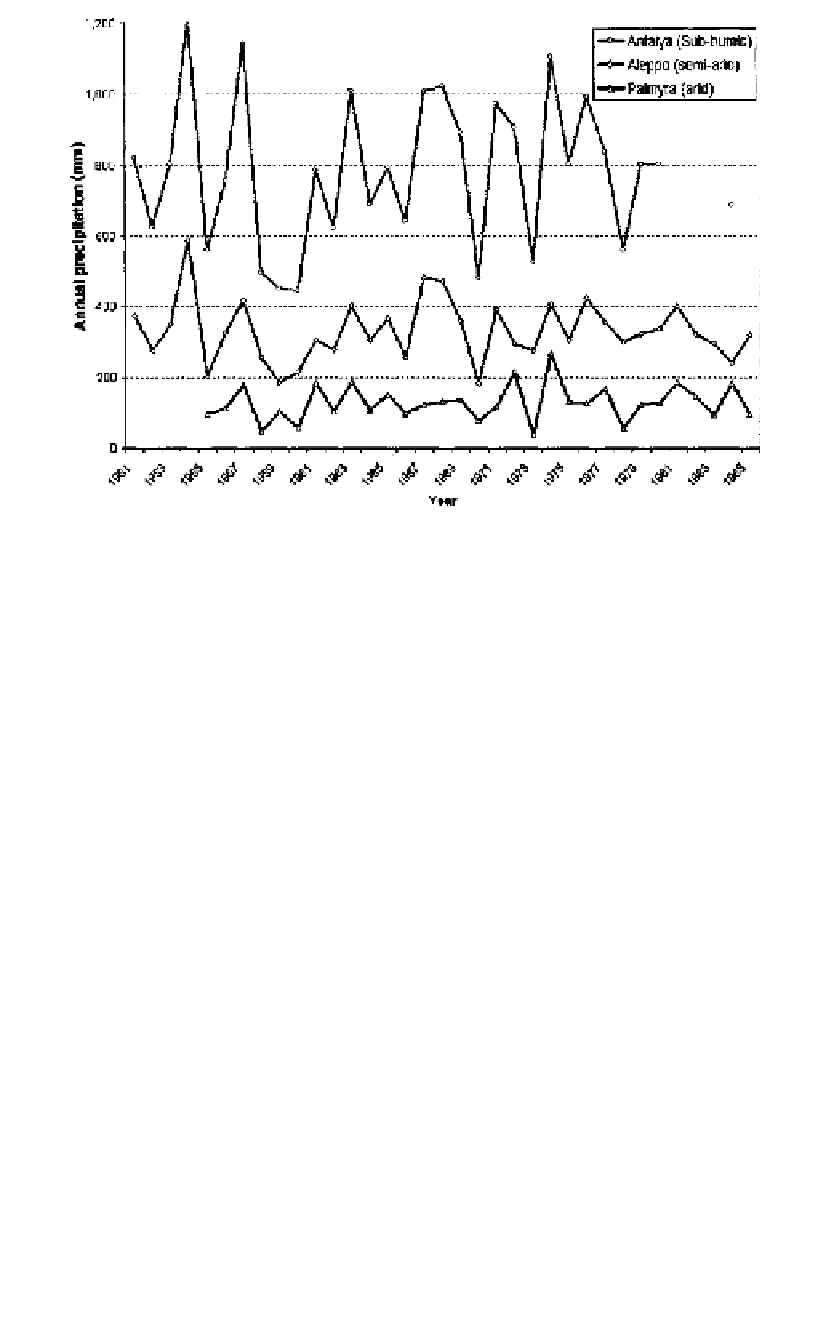Agriculture Reference
In-Depth Information
1
2
3
4
5
6
7
8
9
10
11
12
13
14
15
16
17
18
19
20
21
22
23
24
25
26
27
28
29
30
31
32
33
34
35
36
37
38
39
40
41
42
43
44
45
46
[211
Line
——
3.9
——
Norm
PgEn
Figure 16.2
Precipitation for three stations in Syria and Turkey located in different moisture
zones.
th
e local level is illustrated in figure 16.3. It shows the cumulative rainfall
de
viations for Aleppo, Damascus, and Palmyra in Syria, three locations less
th
an 200 km apart but with different patterns of longer term positive or
ne
gative anomalies.
Throughout the region, drought can strike at any time of the growing
se
ason. Early-season, mid-season, and late-season droughts are all possible.
Ta
ble 16.3 shows the occurrences of severe and mild droughts within the
gr
owing season at Tel Hadya, Syria, for the 1978-2001 period. For this
pa
rticular example, a severe drought is defined as a precipitation total of
le
ss than 50% of the long-term average, and a mild drought as 50-70% of
th
e long-term average. The periods considered are November-December
(th
e early season), January-February (the mid-season), and March-April
(th
e late season).
[211
C
auses of Drought Occurrence
The causes of drought in the Near East are complex, attributed to the geo-
graphical extent and exposure to different oceanic/continental influences
and the wind systems in the western versus eastern parts of the region.
In North Africa, climate is still poorly understood. According to Ward
et al. (1999), most of the precipitation is generated as a result of de-
pressions, which are steered southward from the North Atlantic during
































Search WWH ::

Custom Search